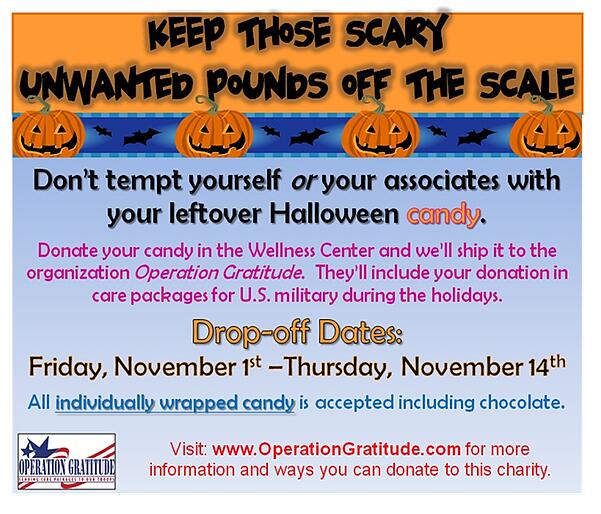What’s happening in corporate wellness programs right now could be characterized as something of a revolt. Well, revolt might be a little dramatic (don’t think Arab Spring), but perhaps it’s more appropriate to say that those who are the target of carrot/stick employee wellness strategies are pushing back.
They’re pushing back on what has been conventional wisdom for a while: that health-risk assessments and biometric screenings are central (dare I say foundational?) to a sound, data-driven corporate wellness initiative. Employees are pushing back on penalties for not playing, and they’re pushing back on programs that brand failure for anyone who doesn’t achieve arbitrarily selected thresholds for biometric markers. They’re growing intolerant of workplace cultural norms that scream hypocrisy in the face of company wellness policies.
As someone involved in the world of corporate health, you’d think I would land squarely on the side of gathering the data and using it to capture ROI. But I don’t; it’s just not that black and white.
Why All the Numbers All of the Time?
What I’m seeing in the industry is that corporate wellness providers bow to the number-focus of the CFO or the CEO and communicate in ROI-speak that uses words and phrases like engagement and human capital. To the untrained eye, you’d think “engagement” and “human capital” would have something to do with…well, humans. But it turns out, most of the time they have more to do with participation quotas, biometric thresholds, and productivity benchmarks than with the actual people who need tools, resources, and support to make healthier choices.
Wellness vendors position and market themselves by spouting figures and “facts” (and I use that word loosely), quoting studies and experts (should I use that word loosely, too?). They put into print ridiculous statistics that have ridiculous consequences—all in the name of numbers, data, and ROI.
Raise Your Hand If You Launched a Career in Corporate Wellness to Calculate ROI.
Accountants are passionate about numbers. Fitness specialists are passionate about people. Seriously, most of us got into this business because we were passionate about forming relationships with people so that they would trust we had their best interest in mind when we suggested resources that would help them make healthier choices. As an industry, we’ve largely forgotten our roots, which grew from wanting to help people.
So who’s to blame? Maybe this isn’t the CEO’s fault; maybe it’s just the way of the world. Maybe it’s the almighty dollar we should be blaming. (I predict a comment that blames the government.) Who knows, maybe it’s my fault. I don’t know where the blame goes, but I don’t think it really matters at this point. We’ve simply swung the pendulum too far onto the numbers side of the equation and we forgot about the people.
You know, the people—the individuals who have complicated, busy, overwhelming and typically unhealthy lives. Like the 56-year-old woman with high blood pressure and back pain who is raising her grandchildren and who has no time to take care of herself. Or the single working parent who works by day, goes to school by night, and who is doing everything he can to ensure his daughter has a better life. He struggles to find time to grocery shop, not to mention cook a meal. And then there’s the hourly call center employee who feels hovered-over by her supervisor, who smokes (though she wants to quit but isn’t sure where to start), and who is pregnant with her first child.
These Employees Need Our Help.
They need a relationship with a wellness professional who cares more about the individual accomplishments of the few than the participation quota of the company. They need someone to stand up and say, “I care about you, and I am here to listen to you, to help you find the tools and resources you need. I’m here to help you celebrate your successes and pick you up when you falter on your path to better health.”
Because at the end of the day, if we don’t move the needle on the health of the individuals, then the corporate strategy means nothing. If the only behavior we incentivize is for people to go get their wellness forms signed so they can “get cash for doing it,” we’ve missed an opportunity.



 Even if I’m not taking a class with her she is always there for encouragement and to help me become the best I can be by educating me. She pushes me personally to be better than I knew I could be, and she stretches me way past my comfort zone! For her position, that’s a compliment! There isn’t a class I take that I don’t wake up the next day feeling it. She is all around a sweet person and really makes it a comfortable atmosphere to workout in. Since my last child was born last October I have lost close to 60 lbs! She has been there every step of the way cheering me on! I’m not the only one who feels this way either, we sure do love her!"
Even if I’m not taking a class with her she is always there for encouragement and to help me become the best I can be by educating me. She pushes me personally to be better than I knew I could be, and she stretches me way past my comfort zone! For her position, that’s a compliment! There isn’t a class I take that I don’t wake up the next day feeling it. She is all around a sweet person and really makes it a comfortable atmosphere to workout in. Since my last child was born last October I have lost close to 60 lbs! She has been there every step of the way cheering me on! I’m not the only one who feels this way either, we sure do love her!"

 Before you carve those pumpkins for Halloween, put them to use for a good workout! NIFS Fitness Management staff in our corporate fitness centers had great success in offering pumpkin workouts to employees this month. If you think about it, pumpkins are like a medicine ball and come in a variety of shapes and sizes to accommodate all intensity levels! So grab that pumpkin off the porch and show your kids how to use a pumpkin for a workout!
Before you carve those pumpkins for Halloween, put them to use for a good workout! NIFS Fitness Management staff in our corporate fitness centers had great success in offering pumpkin workouts to employees this month. If you think about it, pumpkins are like a medicine ball and come in a variety of shapes and sizes to accommodate all intensity levels! So grab that pumpkin off the porch and show your kids how to use a pumpkin for a workout!
 Are you looking for a new, quick, high-intensity workout routine? Then
Are you looking for a new, quick, high-intensity workout routine? Then  Lasalle Pinnock joined the corporate wellness center in July when his department moved. Almost immediately he scheduled an exercise prescription with the NIFS Fitness Management staff and has been following that exercise program ever since. He started with a few days of strength training and cardiovascular exercise. After about a month he came to the staff looking to add one more day of activity to his routine. Each week he updates us on his progress not only with weight lost but how he is improving in stamina and strength. Because of his dedication to exercise he has also been motivated to make healthier choices when it comes to his diet and started sharing the things he’s learned with his wife.
Lasalle Pinnock joined the corporate wellness center in July when his department moved. Almost immediately he scheduled an exercise prescription with the NIFS Fitness Management staff and has been following that exercise program ever since. He started with a few days of strength training and cardiovascular exercise. After about a month he came to the staff looking to add one more day of activity to his routine. Each week he updates us on his progress not only with weight lost but how he is improving in stamina and strength. Because of his dedication to exercise he has also been motivated to make healthier choices when it comes to his diet and started sharing the things he’s learned with his wife. fast food, fried, and greasy foods. If I’m unable to eat a healthy meal I make sure I eat a smaller portion. Instead of getting sodas or chips from the vending machine I grab trail mix or eat some type of fruit. I have noticed since working out I have so much more stamina, energy, and I am less tired during the day. I can really feel and see the difference in my mood and body. Mentally I feel more focused and less stressed, I just feel great. Right now my goal is to stay focused and to keep moving forward. I want to reach my target weight and inspire others.
fast food, fried, and greasy foods. If I’m unable to eat a healthy meal I make sure I eat a smaller portion. Instead of getting sodas or chips from the vending machine I grab trail mix or eat some type of fruit. I have noticed since working out I have so much more stamina, energy, and I am less tired during the day. I can really feel and see the difference in my mood and body. Mentally I feel more focused and less stressed, I just feel great. Right now my goal is to stay focused and to keep moving forward. I want to reach my target weight and inspire others. Did you know that you can exercise your abs every single day of the week? Normally with strength training, you should wait 48 hours before lifting with those same muscles again—however, since the abdominal muscles are made for endurance by performing jobs like supporting posture and breathing, they can be worked all 7 days of the week! If you are particularly sore after an ab workout, still use your best judgment, and delay working them until the soreness is gone.
Did you know that you can exercise your abs every single day of the week? Normally with strength training, you should wait 48 hours before lifting with those same muscles again—however, since the abdominal muscles are made for endurance by performing jobs like supporting posture and breathing, they can be worked all 7 days of the week! If you are particularly sore after an ab workout, still use your best judgment, and delay working them until the soreness is gone. Whether we like it or not, we have an epidemic on our hands. Whether you are overweight, obese or not, classifying obesity as a disease will affect you, if it hasn’t already. Changes are in order. Simply classifying obesity as a disease does not make the necessary changes automatically occur and I’ve already expressed my concern with the direction I think this could go.
Whether we like it or not, we have an epidemic on our hands. Whether you are overweight, obese or not, classifying obesity as a disease will affect you, if it hasn’t already. Changes are in order. Simply classifying obesity as a disease does not make the necessary changes automatically occur and I’ve already expressed my concern with the direction I think this could go.  In this fitness challenge we are going to tackle
In this fitness challenge we are going to tackle  How did we get this overweight, this quickly? In part one of this series, we talked about what obesity is and if it's really a disease, you can read that
How did we get this overweight, this quickly? In part one of this series, we talked about what obesity is and if it's really a disease, you can read that